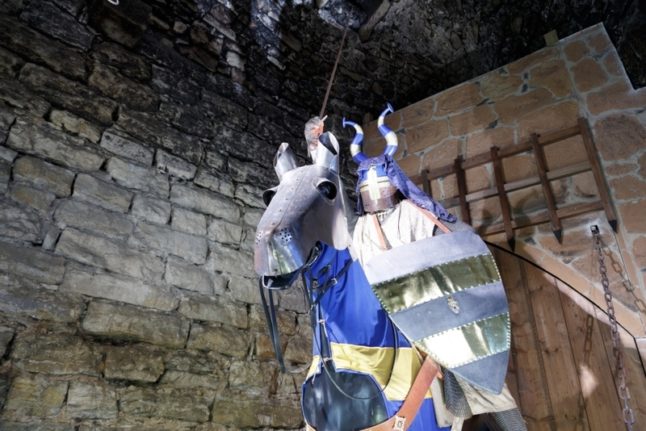Quasthoff’s career in music had a challenging beginning. His physical disabilities, caused by his mother’s exposure to the drug thalidomide, prevented him from playing the piano and he was thus denied admission to study at Hanover’s academy of music.
Instead he studied privately and in 1988 he won first prize at the ARD international musical competition in Munich – the first of many international honours and awards he was to receive.
His music has earned him an impressive trophy cabinet. Quasthoff has won three Grammies. He was awarded Germany’s Order of Merit in 2005, the Gold Medal of the Royal Philharmonic Society in 2009, and the Gold Medal of London’s Wigmore Hall in 2011.
Alongside his performances, Quasthoff has taught music since 1996, initially at the College of Music in Detmold, and since 2004 at the Hans Eisler School of Music in Berlin.
But in January 2012, Quasthoff announced his withdrawal from concert life. “My health no longer allows me to live up to the high standard that I have always set,” he said.
He thanked his colleagues in the singing world, which he called “this wonderful profession”, and his audience, for their “loyalty”. “I am looking forward to the new challenges that will now enter my life”, he said.
One of those challenges was his series of Nachtgespräche [Night talks], in which he interviewed many prominent musical, cultural and political guests on stage at the Berlin Konzerthaus.
Last Monday, though, Quasthoff launched his next, somewhat different, project – a comedy variety show called Keine Kunst [Not Art] featuring himself and seasoned variety performer Michael Frowin at the Wühlmäuse cabaret theatre in Berlin’s West End.
Quasthoff was keen to underline that the show was not a political satire, but rather dealt with art and culture. The material makes fun of amusing “foyer chats”, actors’ odd habits, bizarre art critics and college entrance exams, the Berliner Morgenpost reported.
Despite mocking the habits of fellow performers, overstatement was off the agenda for the new cabaret: “I’m obviously not going to get up on stage and just wag my finger”, said Quasthoff. “I’d rather just neatly point to something using care and subtlety”.
The aim, he said, was to provide a “relaxed, sophisticated evening”, without coming off as “two intellectuals on stage, reveling in their own education”.
The 53-year-old was quick to distance Keine Kunst from mainstream comedy, seeing cabaret as a vehicle for something cleverer. “It’s better, I find, to make satire with a few choice words, and good acting, expertly combined,” he said. “In a show like this, you can do so much with tones of voice and different characters.”
But communicating subtle concepts to an audience can be a challenge. “You really have to think a lot about how to make sure what you want to say comes across to the audience in the right way,” he said in the Berliner Morgenpost.
It seems his efforts have not been in vain. The men’s lifestyle magazine GQ, which selected Quasthoff as its “Man of the Year” for 2012 in the culture category, credits him with an “incomparable sense of humour and a brilliant talent for voice impressions”.
He modestly told GQ: “Whether you’re good or not depends if you’re on form and on the tastes of the people watching”, said Quasthoff. By all accounts he must be on form.
Alex Evans



 Please whitelist us to continue reading.
Please whitelist us to continue reading.
Member comments